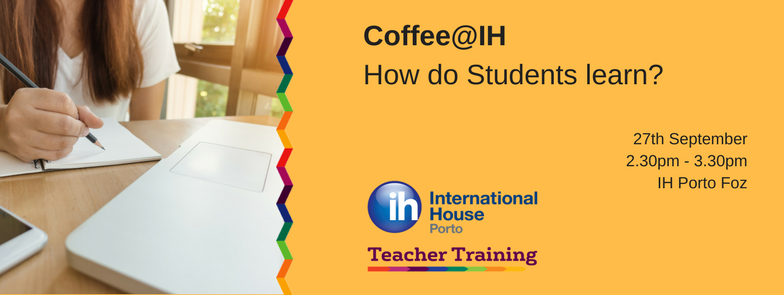Here’s a proposition from a teacher who used to believe that materials brought into the classroom should be aimed solely at providing input: use commercials that have no words or that are in another language to promote thought as well as opportunities for storytelling and language production. Inspiration for using images like commercial in the ESL classroom has reached me from various sources, but I always focussed on discrete short films and occasionally commercials that were cleverly disguised as not selling anything. However, why not use a commercial that openly sells, provided it tells a story or relates to a topic at hand?
Commercials can naturally entertain and set a mood for a class, but they can also:
· inspire curiosity
· engage students
· motivate
· give context for classroom interaction
· promote critical thinking
· help students relate personal experiences and viewpoints
Before my final selection for recent conference talks, an exceedingly long list of commercials were suitable for developing activities. In fact, critically paring the list down still brought a solid 20, even when narrowed to the last few years. Thus, rather than giving a long list, it seems better to give a few examples and then explain how to find your own, impactful specimens.
Japan – Ocedel Lighting “Firefly Man” https://www.youtube.com/watch?v=hJXbC1ewiRA
Writing intertitles or subtitles for this film is an engaging exercise. The surprise ending also can lead to multiple explanations.
Canada – Snack Time Mystery https://www.youtube.com/watch?v=EadXh9V6ySA
The disappearance of “Chip” is answered in three scenarios, so students can choose their own adventure. Students can predict the endings using the titles of the different versions. They can also write their own ending.
Romania – Rom Milk Chocolate https://www.youtube.com/watch?v=xuw0I8Il8uE
Here you can talk about the different “tricks” the Romanian farmer had. What could you do in your community to get tourists to do your work?
India – Ariel Share the Load https://www.youtube.com/watch?v=wJukf4ifuKs
Commercials can be also much more than just funny. At times, important social issues are also covered like in this one. Students can write their own letter talking about things they are sorry for doing/not doing around the house. Similarly, many interesting commercials are to be found for the “Touch the Pickle” campaign in India. These focus on breaking down some Indian taboos related to young woman.
China – Breathe Again https://www.youtube.com/watch?v=1e1qGc66W9k
This last example, touches on the environment, just the tip of the iceberg in this area and others. What other facts can your students find about air pollution? What does air pollution affect?
Finding good videos can be easily achieved in four steps. First, open up both Vimeo and YouTube. Second, brainstorm what kind of product you could associate with topics in your class. Consider using brand names, but also just talking about the product (for example, Ice Cream rather than Ben and Jerry’s). Add a country you could find interesting and the word “commercial”. Third, enter these searches in both Vimeo and YouTube. Add also descriptors such as “funny” “sad” “surprising”. Fourth, look for commercial awards lists such as this one: Cannes Lions Archives. This database has names of projects that are innovative and will engage your students. You can get names of new projects and then search for them on YouTube or Vimeo. Sometimes you will find commercials like those above or you may also find descriptions of campaign projects likes this one promoting literacy:
https://www.youtube.com/watch?v=OyU3Gmf3Kio
Additionally, you can also look for lists like the one below, which are more user-friendly but less complete:
http://www.adweek.com/creativity/see-all-23-grand-prix-winners-from-the-2017-cannes-lions-festival/
To find simple lists, Google keywords such as “commercials awards winners + year”. In the link above, you have a description of projects explaining the commercials, which gives added dimension to activities. These will be sure to please, while the quality stands out. Putting this into perspective, consider that media producers aim to engage the modern day public increasingly bombarded by sensational claims and images. Through the art these gurus wield, teachers can certainly find engaging stories to promote discussion and to lead to further language activities. By using commercials, you can set the mood for your class and set a stage for your students to perform, whatever the language.





 “Positively charged “ defines the ambience which transpired throughout the third and last day of the conference. The first speaker set the tone for the rest of the day’s events with much laughter at his seemingly trivial anecdotes which made us reflect on how fixated we tend to be on academic success and rather forgetful about other equally important aspects. Thus, we were reminded of the significant qualities such as resilience, effort and perseverance in achieving goals, the ability to interact and build relationships and curiosity have on increasing students’ motivation to succeed both educationally as well as socially. Furthermore, the role we teachers play in generating and implementing positive emotions in our classrooms was pointed out as being crucial for eliciting interest, pride, hope, joy and gratitude so that our students can develop constructive life skills and flourish as individuals.
“Positively charged “ defines the ambience which transpired throughout the third and last day of the conference. The first speaker set the tone for the rest of the day’s events with much laughter at his seemingly trivial anecdotes which made us reflect on how fixated we tend to be on academic success and rather forgetful about other equally important aspects. Thus, we were reminded of the significant qualities such as resilience, effort and perseverance in achieving goals, the ability to interact and build relationships and curiosity have on increasing students’ motivation to succeed both educationally as well as socially. Furthermore, the role we teachers play in generating and implementing positive emotions in our classrooms was pointed out as being crucial for eliciting interest, pride, hope, joy and gratitude so that our students can develop constructive life skills and flourish as individuals.